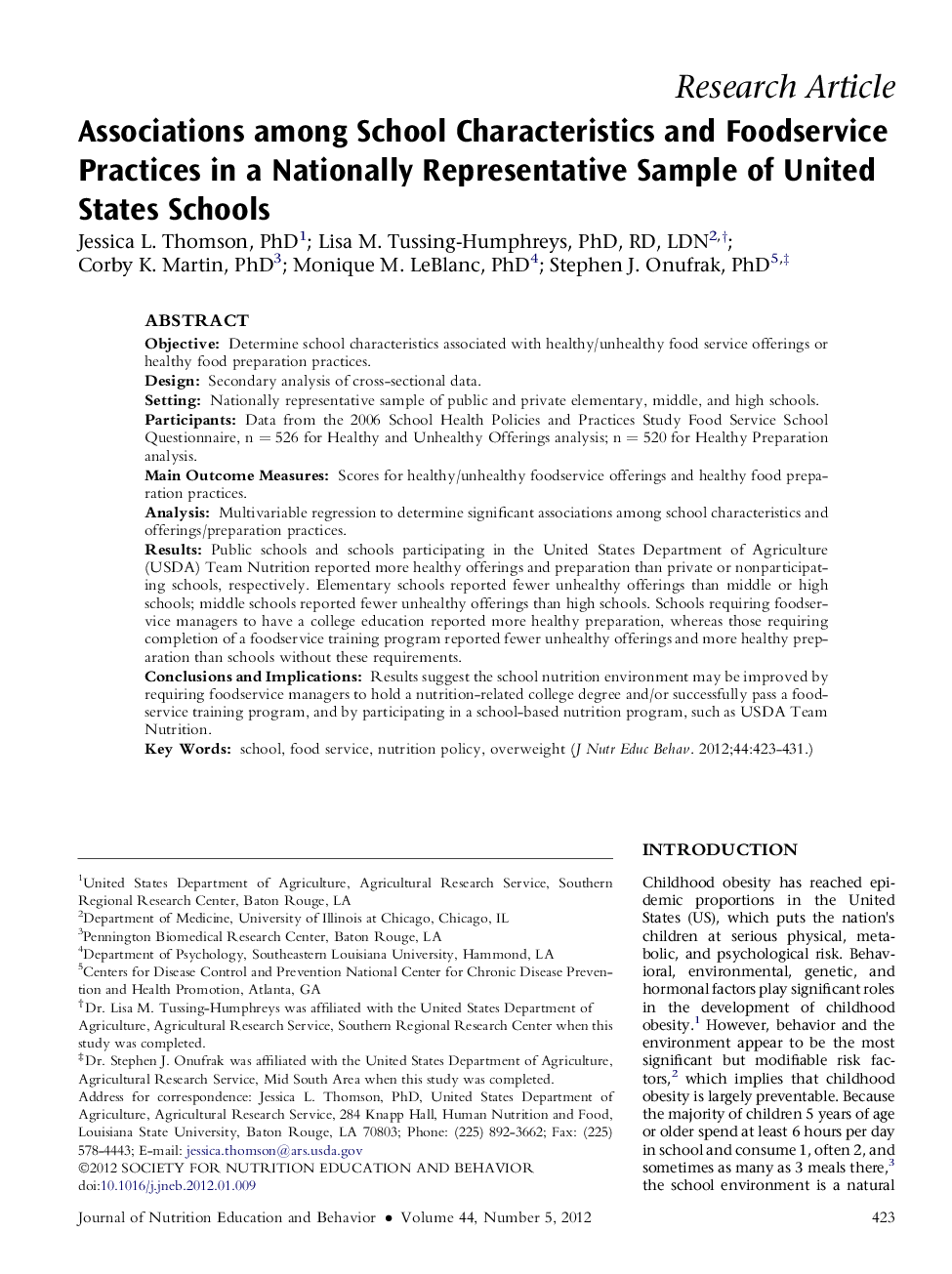| Article ID | Journal | Published Year | Pages | File Type |
|---|---|---|---|---|
| 361440 | Journal of Nutrition Education and Behavior | 2012 | 9 Pages |
ObjectiveDetermine school characteristics associated with healthy/unhealthy food service offerings or healthy food preparation practices.DesignSecondary analysis of cross-sectional data.SettingNationally representative sample of public and private elementary, middle, and high schools.ParticipantsData from the 2006 School Health Policies and Practices Study Food Service School Questionnaire, n = 526 for Healthy and Unhealthy Offerings analysis; n = 520 for Healthy Preparation analysis.Main Outcome MeasuresScores for healthy/unhealthy foodservice offerings and healthy food preparation practices.AnalysisMultivariable regression to determine significant associations among school characteristics and offerings/preparation practices.ResultsPublic schools and schools participating in the United States Department of Agriculture (USDA) Team Nutrition reported more healthy offerings and preparation than private or nonparticipating schools, respectively. Elementary schools reported fewer unhealthy offerings than middle or high schools; middle schools reported fewer unhealthy offerings than high schools. Schools requiring foodservice managers to have a college education reported more healthy preparation, whereas those requiring completion of a foodservice training program reported fewer unhealthy offerings and more healthy preparation than schools without these requirements.Conclusions and ImplicationsResults suggest the school nutrition environment may be improved by requiring foodservice managers to hold a nutrition-related college degree and/or successfully pass a foodservice training program, and by participating in a school-based nutrition program, such as USDA Team Nutrition.
